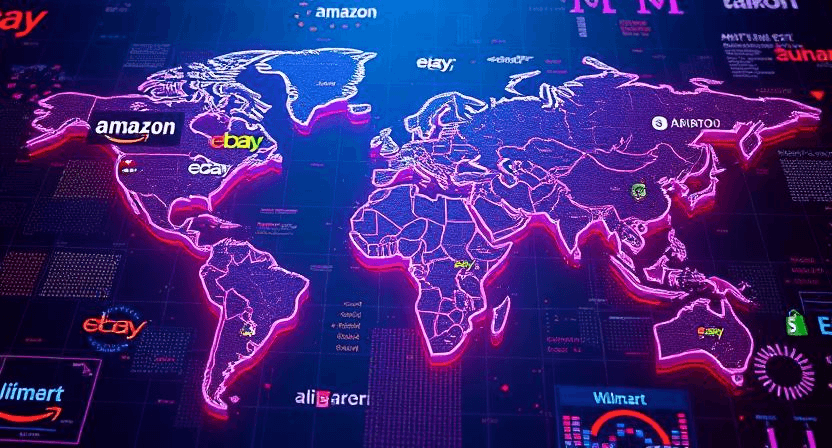Global Market Trends Analysis: The Rise of Cross-Border E-Commerce and Evolving Consumer Behaviors
 The global e-commerce landscape is undergoing a seismic shift, driven by technological innovation, shifting consumer preferences, and the lasting impacts of the COVID-19 pandemic. Among the most compelling trends is the explosive growth of cross-border e-commerce in emerging markets such as Southeast Asia, the Middle East, and Latin America. These regions are not only redefining global trade dynamics but also presenting unique opportunities and challenges for businesses aiming to capitalize on their rapid digital transformation.
The global e-commerce landscape is undergoing a seismic shift, driven by technological innovation, shifting consumer preferences, and the lasting impacts of the COVID-19 pandemic. Among the most compelling trends is the explosive growth of cross-border e-commerce in emerging markets such as Southeast Asia, the Middle East, and Latin America. These regions are not only redefining global trade dynamics but also presenting unique opportunities and challenges for businesses aiming to capitalize on their rapid digital transformation.
1. Fastest-Growing Markets for Cross-Border E-Commerce
Southeast Asia has emerged as a hotspot for cross-border trade, with its digital economy projected to reach $330 billion by 2025 (Google, Temasek, Bain & Company). Platforms like Shopee and Lazada have fueled adoption by offering localized payment solutions and leveraging social media to engage tech-savvy, mobile-first consumers. Countries like Indonesia, Vietnam, and Thailand lead the charge, supported by a young population (70% under 40) and rising internet penetration (75% by 2025).
In the Middle East, cross-border e-commerce is thriving due to high disposable incomes and a preference for international brands. The UAE and Saudi Arabia dominate, with the latter’s market growing at 32% CAGR (Statista). Platforms such as Noon and Amazon.ae are tapping into demand for luxury goods, electronics, and fast fashion, while “buy now, pay later” (BNPL) services align with cultural preferences for cashless transactions.
Latin America, meanwhile, is witnessing a 37% annual growth in cross-border sales (EBANX). Brazil and Mexico are key players, driven by improved logistics and fintech adoption. Mercado Libre, the region’s e-commerce giant, has expanded its cross-border capabilities, catering to demand for affordable electronics and niche products like K-beauty.
2. Consumer Behavior and Cultural Nuances in Emerging Markets
Understanding cultural and behavioral differences is critical for success:
- Southeast Asia: Consumers prioritize affordability, convenience, and social proof. Platforms integrate “shoppertainment” (live-streamed sales, gamification) to engage users. Cash-on-delivery remains popular in cash-reliant economies like the Philippines.
- Middle East: Brand loyalty and luxury purchases are key. Ramadan and Eid drive 30% of annual sales, while stringent halal certification and Arabic-language interfaces are non-negotiables.
- Latin America: Price sensitivity shapes purchasing decisions, with installment payments (e.g., Mexico’s meses sin intereses) widely used. Trust in local influencers and skepticism toward foreign brands require hyper-localized marketing.
3. Post-Pandemic Cross-Border Consumption Trends
The pandemic accelerated digital adoption, but its legacy lies in permanent shifts:
- Hybrid Shopping Journeys: Consumers blend online research with offline experiences. In Southeast Asia, 60% use social media for product discovery (Meta).
- Demand for Sustainability: Ethical sourcing and eco-friendly packaging influence purchasing, particularly among Gen Z in urban hubs like Jakarta and São Paulo.
- Resilience-Driven Purchases: Economic uncertainty has boosted demand for value-for-money products and cross-border bargains. For example, Chinese platforms like Shein and Temu dominate Latin America with ultra-low pricing.
- Localized Logistics: Faster delivery expectations have spurred investments in regional warehouses and partnerships with local logistics firms (e.g., Ninja Van in Southeast Asia).
Conclusion: Navigating the New Frontier
To succeed in these high-growth markets, businesses must adopt agile strategies:
- Hyper-Localization: Tailor offerings to language, payment methods, and cultural norms.
- Leverage Technology: AI-driven personalization and blockchain for supply chain transparency.
- Build Trust: Partner with local influencers and ensure data security to overcome skepticism.
As cross-border e-commerce reshapes global trade, the winners will be those who embrace adaptability, cultural empathy, and innovation to meet the evolving demands of tomorrow’s consumers.
Share this page
